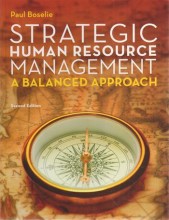How to value nature?
27 important questions on How to value nature?
What are the types of values represented in the diagram?
- Intrinsic Value: Worth inherent to an object or ecosystem.
- Relational Value: Value from relationships between people and nature.
- Instrumental Value: Utilitarian value to humans for specific purposes.
What is the relationship between market price and value in neoclassical economics?
- Market price equals the value of a good/service.
- Value is determined through market exchange.
- Without a market, there is no value defined.
How does political/classical economics define the value of a commodity?
- A (labor) value – production labor time.
- Use value – utility of the commodity.
- Exchange value – exchange proportion with other commodities.
- A price – distinct from value.
- Higher grades + faster learning
- Never study anything twice
- 100% sure, 100% understanding
How does economic value compare to market value?
- Higher than market value.
- Reflects the maximum price a customer pays.
- Not applicable to many natural resources outside markets.
What does valuing nature involve?
- Assigning monetary value to natural resources.
- Incorporating environmental concerns in analyses.
- Influencing wise use/conservation decisions.
- Raising political and public awareness.
- Preventing free-riding consequences.
What are the potential consequences of the belief that “nature is free”?
- The tragedy of the commons.
- Underestimation of environmental costs.
- Overexploitation of natural resources.
- Increased social and economic costs.
What is the importance of valuing nature in economic and social terms?
- Recognize long-term benefits for people and economy
- Encourage better care for the natural world
- Integrate nature's value in decision making.
How can we use the value of natural capital for conservation?
- Highlighting the importance of ecosystems
- Using examples like carbon storage in tiger habitats
- Helping governments plan for improved protections and benefits.
What is the Contingent Valuation Method and its purpose?
- Willingness to pay for sustainable practices
- Match social and private costs
- Proxy for public value of environmental changes.
How do we create hypothetical market situations for ecosystem services?
- Maximum payment for cleaner air in cities
- Willingness to pay to protect species like the bald eagle
- Compensation for loss of biodiversity.
What is the strong sustainability paradigm regarding ecosystem services?
- Systems providing relational value
- Emphasizing the mutual relationship between people and nature
- Highlighting human dependency on natural resources.
What are the goals of collaborating with different organizations regarding nature's value?
- Ensure nature's value is central to decision-making
- Engage governments, businesses, and financial institutions
- Advocate for sustainable practices globally.
How should changes in biodiversity and ecosystems be evaluated according to the text?
- Valuing alternatives to biodiversity and ecosystem states
- Recognizing that defining a 'true' value is complex
- Focusing on comparative analysis for informed decision-making.
What are the main types of ecosystem services classified under provisioning services?
- Food (e.g., fish, game, fruit)
- Water (e.g., drinking, irrigation)
- Raw Materials (e.g., fiber, timber)
- Genetic Resources (e.g., crop-improvement)
- Medicinal Resources (e.g., biochemicals)
- Ornamental Resources (e.g., artisan work)
What functions are included in regulating services?
- Air Quality Regulation (e.g., filtering pollutants)
- Climate Regulation (e.g., CO2 sequestration)
- Moderation of Extreme Events (e.g., flood prevention)
- Regulation of Water Flows (e.g., natural drainage)
- Waste Treatment (e.g., water purification)
- Erosion Prevention
- Maintenance of Soil Fertility
- Pollination
- Biological Control (e.g., pest control)
What are the specific services provided under habitat services?
- Maintenance of Life Cycles of Migratory Species (e.g., nursery service)
- Maintenance of Genetic Diversity (e.g., gene pool protection)
Which services fall under cultural and amenity services?
- Aesthetic Information
- Opportunities for Recreation & Tourism
- Inspiration for Culture, Art, and Design
- Spiritual Experience
- Information for Cognitive Development
What are the components of ecosystems and biodiversity according to the conceptual framework?
- Ecological structures & processes: Photosynthesis, nutrient cycling, food-chain dynamics, etc.
- Functions: Production, biomass regulation, water regulation, habitat requirements, information, and landscape.
Identify the types of ecosystem services described in the conceptual framework.
- Provisioning: Food
- Regulating: Flood prevention
- Habitat: Nursery
- Cultural: Recreation
What direct drivers of ecosystem change are highlighted in the framework?
- Land-use change
- Habitat destruction
- Pollution & disturbance
- Resource use
What indirect drivers influence ecosystems and biodiversity according to the framework?
- Demography
- Technology
- Economy
How does the framework link human well-being with ecosystems?
- Benefits & Values: Economic (welfare), Social (wellbeing), Ecological (sustainability)
- Indicators: Economic (GDP), Socio-cultural (wellbeing indices), Biophysical (resilience)
What values are associated with species according to the quotes?
- Intrinsic value: Not conferred or revocable (Soule 1985)
- Preservation value: Equal concern (Taylor 1986)
- Objective value: Endangered species are valuable (Rolston 1986)
What is the significance of combining qualitative and quantitative indicators in environmental assessment?
- Calculate potential negative consequences on health and productivity
- Assess impacts on infrastructures
- Determine financial needs to manage these consequences
What does INTRINSIC VALUE entail concerning nature?
- Right to live and exist
- Right to regenerate its bio-capacity
- Right to water and clean air
- Right to freedom from contamination
What are the rights included in INTRINSIC VALUE?
- Right to live and exist
- Right to regenerate bio-capacity
- Right to clean water and air
- Right to be free from pollution
- Right to restoration for violations
What are REDD+ programs aimed at?
- Reward communities living in forest areas
- Assign a monetary value to forests
- Encourage conservation efforts
- Ensure that nature and people are not commodified
The question on the page originate from the summary of the following study material:
- A unique study and practice tool
- Never study anything twice again
- Get the grades you hope for
- 100% sure, 100% understanding































